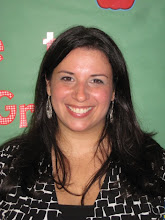According to Jacob, “Today was awesome! We got to do a lot of cool stuff.” A few groups of children got to cook in our classroom. Emma, Amanda, and Dylan A. got to make cranberry sauce with Amanda’s mom. They used cranberries, sugar, and water. Two groups made pumpkin pie. Lauria, Victoria, Adam, and Dylan M. worked with Adam’s dad. Jacob, Drew, Dylan, and Eesha also made a pumpkin pie with Jacob’s mom. Most of the ingredients were the same. A few ingredients were different. One of the groups put a smiley face on the top.
Ms. Stern read us a book called Stone Soup. It was about a hungry young man who tricked an old woman. He asked for food but she wouldn’t give him any. He asked her for a stone and told her that he was going to make soup from a stone. Slowly, she gave him onions, carrots, beef bones, salt, pepper, and barley to add to the boiling water. In the end, they ended up with a meal fit for a king! Lots of people thought the woman was greedy. The young man was smart to be able to trick her. On Wednesday, we will be making Stone Soup with our own stone. Mrs. Polansky asked us whether the soup would end up tasting good even if we didn’t include the stone. Some people thought yes and others thought no. We will have to wait and see when we try it on Wednesday!
During Reader’s Workshop we reviewed the latest strategy that we learned: looking for chunks. A chunk is a little word or a part of a word that we already know that helps us figure out another word that we don’t know. We DON’T need to look for chunks when we already know the word. We learned that sometimes a chunk that we find doesn’t help us figure out the word. If that happens, we need to use other strategies like looking at the picture, getting your mouth ready, or thinking about what makes sense.
Ms. Harding read us a book called Sarah Morton’s Day. It was about a girl who lived at Plymouth Plantation. We made a Venn diagram comparing children today with Pilgrim children. Children long ago had chores like milking goats and feeding chickens. They also played marbles and wrote on chalkboards. Children today watch TV, use air conditioning, and have running water. Children long ago and today do chores, play with toys, and fold clothes. After we talked about the book, we worked on turkey booklets at our seats.
In art, we worked on tissue paper collages. The colors were overlapping and some made new colors. Sasha placed yellow and red together to make orange. Sarah used blue and yellow to make green. Red, yellow, and blue are primary colors. Orange, green, and purple are called secondary colors.
Subscribe to:
Post Comments (Atom)





No comments:
Post a Comment